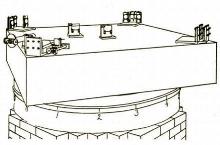
The Michelson-Morley experiment was an attempt to detect the velocity of the Earth with respect to the hypothetical luminiferous ether, a medium in space proposed to carry light waves. First performed in Berlin in 1881 by the physicist A.A. Michelson, the test was later refined in 1887 by Michelson and E.W. Morley in the United States.
The procedure depended on a Michelson interferometer, a sensitive optical device that compares the optical path lengths for light moving in two mutually perpendicular directions. It was reasoned that, if the speed of light were constant with respect to the proposed ether through which the Earth was moving, that motion could be detected by comparing the speed of light in the direction of the Earth's motion and the speed of light at right angles to the Earth's motion. No difference was found. This null result seriously discredited the ether theories and ultimately led to the proposal by Albert Einstein in 1905 that the speed of light is a universal constant.

Michelson and Morley mounted their apparatus on a stone block floating in a pool of mercury, and rotated it to seek changes in relation to the motion of the earth in its orbit around the sun. They arranged one set of light beams to travel parallel to the direction of the earth's motion through space, another set to travel crosswise to the motion.
For more detailed information on the Michelson-Morley experiement, click here.
Excerpt from the Encyclopedia Britannica without permission.